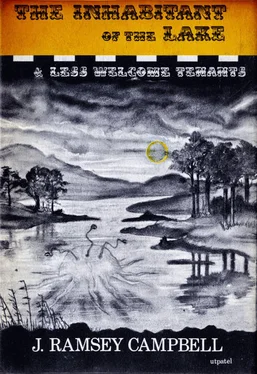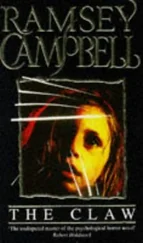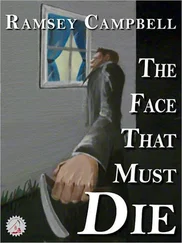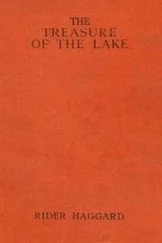The temple was positioned next at the centre of a city on that planet in the next galaxy — an uninhabited planet, it seemed, which the insect colonists named Thuggon. They stayed here less than a year; for before they had been there ten months, they noticed a steady decrease in the number of slaves on the planet, and learned that the beings had been disappearing after dark, though none was ever seen to leave. When two insect-beings disappeared on successive nights, a party left the city next day to search; and some miles beyond the colony they discovered a huge stretch of marshy ground, at the centre of which lay a vast stone tower, from which led suggestively recent-looking footprints to a black object at the edge of the marsh. And when the black object was seen to be a neat pile, composed of the severed heads of the insects together with their bodies, and when they saw that all the flesh had been sucked out through the gaping gash where the heads should have been, the party were not slow in returning to the city and demanding the speedy removal of the temple from Thuggon.
After the quitting of Thuggon, the insects established themselves on a planet which the inhabitants knew as L'gy'hx, and which is called Uranus here on Earth. This world became the home of the insects for many centuries, for the native race of cuboid, many-legged metal beings was not openly hostile, but allowed them to build their usual outpost with the labour of the beings from Xiclotl. They built a new temple — the old one having grown dilapidated with so much travelling — and fashioned it in a conical shape, carefully constructing the multi-dimensional gate which must exist in each temple to allow the entry of that which my informant passed off as 'that from Outside.' The city flourished, and the beings native to L'gy'hx gradually came to accept the insects as a race ruling the planet jointly with themselves. The only thing for which the natives did not care was the insects' worshipping the hideous god Azathoth. They themselves were worshippers of the relatively insignificant deity Lrogg, which conferred benefits on its worshippers and demanded only annual sacrifice, in the shape of the removal of the legs of a conscious native. The cuboid beings disliked the vague tales of atrocities practised on still-living victims in the conical temple of Azathoth, and when a rebellious set of natives began to visit the insects' city to worship there the elders of L'gy'hx felt that steps should be taken to prevent such unwelcome infiltrations into their theology. But while they did not fear the weapons of the insect-race, they did not like to incur the wrath of the idiot god, and finally decided to do nothing. Some years passed, during which two major sequences of events happened. While a steady hate grew in the majority of the insects for the obscene rites of Azathoth, and a desire for the easy rituals prescribed for Lrogg's worshippers began to rise, the rebel set among the natives grew steadily more fervid in their prostrations before the new god and their hate for their natural god. At last these two feelings publicised themselves at the same time. This double revelation came when a particularly fervent group of native Azathoth-worshippers violated a temple, smashing all the statues of the two-headed bat-deity Lrogg and killing three of the priests. After acid had been poured into the brains of the offenders, the chief priests of Lrogg declared that the temple of Azathoth must be removed altogether from the planet, together with its insect-worshippers, although the insects who would conform to the planetary religion might remain if they wished. The cuboid natives who had become believers in the creed of Azathoth were all treated in the same way as the original offenders, as an example.
Only about thirty of the race from Shaggai left in the temple, but teleporting it in unison they managed to bring it down on a nearby planet — Earth. They made an imperfect materialization in the clearing near Goatswood, leaving the best part of the temple underground, and only thirty feet protruding above the surface. In the top of the cone the insects lived, while in the central portion the beings from Xiclotl were stabled; in the lower forty-foot portion was kept that which they worshipped in the temple. During daylight the insects worshipped the tenant of the secret portion of the fane, but after dark they went forth to carry on an insidious campaign to hypnotise selected subjects and lure them to the clearing.
From these hypnotised subjects was formed that decadent witch-cult which grew up around the temple in the clearing. The members of the coven did not merely visit the clearing to worship and sacrifice persons on the altar there; they went there to experience the obscene pleasure of allowing the insects to inject their memories into their brains, which they enjoyed in the same way a drug addict gains pleasure from his induced delirium. And at that moment, God help me, I was experiencing the same sensations — and doing nothing to shake them off.
As the witch-cult grew, the insects began to form a plan. Whereas at the beginning they merely lured humans to their haven in order to explore the perversions of their subconscious for pleasure, they gradually came to the conclusion that, if they handled their victims the right way, they would become the new rulers of the planet. First they could overpower the inhabitants of the nearby countryside and then, as they themselves propagated, the whole of the planet. The humans might either be destroyed utterly or retained as a subsidiary labour force, while the newly-revealed insect race would build cities and temples, and finally, perhaps, the huge multi-dimensional gate which alone will let Azathoth into this universe in his original form.
Thus the final purpose of the cult was shaped. It thus came as a great blow when the local coven was persecuted for witchcraft and all members executed. Worse still, the word got round that the clearing was connected in an unholy manner with this witchcraft, so that those who lived anywhere near it quickly moved to more wholesome surroundings. The insects would have been able to teleport, had it not been for some constituent of the atmosphere which prevented this; the same unallowed-for obstacle made it impossible for the beings to fly any great distance. They therefore declined, using the beings from Xiclotl — which, because of their guarding the clearing in daylight while the insects worshipped, they called the equivalent in their language of the 'Daytime Guardians'—to drive unwary wanderers in the woods into the glade. The few they managed to lure to the cone they attempted to use as the foundation of the new cult which they tentatively planned, but without success. That young man of whose visit to the clearing the legend told had been the first in many years, and had been such an unwilling subject that attempts to force him into submission led only to his complete insanity. After his visit, the only person actually to be taken over by one of the insect-parasites had been myself.
And so the history of the insects from Shaggai had been brought into the present. For the minute I wondered what memories the being in my cranium would now let flow into my brain, but almost immediately afterwards I knew what I was next to see. The insect had decided to make the supreme revelation — it was going to unveil one of its hidden memories of a visit to the lower regions of the temple .
Immediately the creature was in the tip of the cone, lying on a grey metal slab in its quarters. It was awakening at that moment, sensing the rise of the sun outside, and it then extended its legs and clattered off the slab, over to the sliding door. It inserted its leg tip into one of the pits in the door and slid it back, turning to look back at the bare semi-circular chamber and the flashing light over the slab, set where it would hyponotize the slab's occupant to immediate sleep.
Читать дальше












